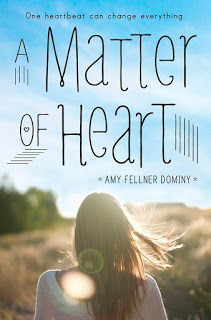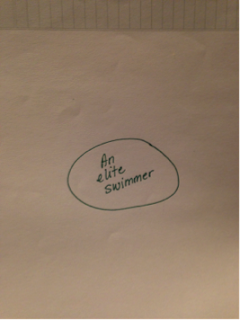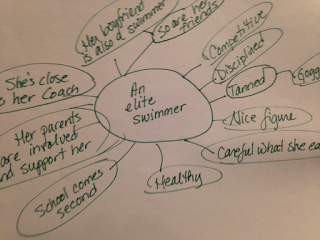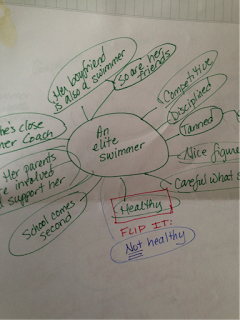Friday Feedback with Amy Fellner Dominy - Character Mapping
Already Friday again!
Whew!!
I'm super happy today because I have one of my besties here -- or as we like to call ourselves "BVFEs" (You figure it out)!
Amy Fellner Dominy and I were both members of the Class of 2K11 now The Graduates, and we fell instantly in love with each other's writing, and it went from there.
Her first middle grade novel, OyMG (see what they did there?!?) and her second, AUDITION & SUBTRACTION are both chock full of wonderful characters searching for identity, and beautiful writing.
Amy is also an incredible "Beta reader" for me and I believe her insightful feedback on an earlier draft of THE SUMMER OF LETTING GO which sent me frantically revising, was substantially responsible for the book finally getting a deal.
 Amy's newest book, a YA this time, A MATTER OF HEART, follows 16-year old Abby Lipman who, on track to win the state swim championships and qualify for Olympic trials, learns she has a deadly heart condition.
Amy's newest book, a YA this time, A MATTER OF HEART, follows 16-year old Abby Lipman who, on track to win the state swim championships and qualify for Olympic trials, learns she has a deadly heart condition.Now, Abby is forced to discover who she is without the one thing that's defined her entire life.
School Library Journal said of A MATTER OF HEART, "More than a sports novel, this book delves deep into issues of identity... and the importance of support systems while making life-altering decisions."
I picked up a copy last week and, though I'm still finishing two other books, allowed myself to read the opening breathtaking chapter. It's so very good!
So, without further ado, here's Amy!**

Good Morning!
I’m so glad you’re here for Teacher’s Write and Friday Feedback.
I’m really glad to be here, too!
Today, I want to talk to you about what I think is arguably the MOST important part of your story.
Your characters.
But before I get to that, I want to talk about how RIDICULOUSLY DIFFICULT it is to write a book.
"If you’re writing a book you’re juggling characters, problems, goal, stakes, dialogue, narrative, POV, action, setting, theme, symbolism, language, pacing, rhythm, style, grammar, rising tension, character arcs, growth, subplots, climaxes, denouements, beginnings, endings, middles—well, it’s like juggling ten octopuses who are juggling ten octopuses who are juggling."
I don’t want to be Debbie Downer here, but if you’re writing a book you’re juggling characters, problems, goal, stakes, dialogue, narrative, POV, action, setting, theme, symbolism, language, pacing, rhythm, style, grammar, rising tension, character arcs, growth, subplots, climaxes, denouements, beginnings, endings, middles—well, it’s like juggling ten octopuses who are juggling ten octopuses who are juggling. In other words, lots of balls in the air. So, when you can, if you can, wouldn’t it be nice to make things a little easier?
Which brings me back to our discussion of characters.
There are many ways to discover/develop your character and I’ve tried most of them over the years: character interviews, 5-page questionnaires, creating monologues, accosting strangers in the mall to ask about their lives (definitely don’t try that one) and on and on. But recently, I discovered another way that seems almost (dare I say it?) easy.
It’s called Character Mapping. I’m going to illustrate it here in case it might be something that will work for you, too.
Start with a blank piece of paper with a circle in the middle.

See how easy it is?
Now, inside of that circle, write down the thing that defines your character. Usually, it’s what they’re doing in your book. It might be a job, or if they’re a student than maybe it’s what they love to do. So, for example, in my novel A Matter of Heart, Abby is an elite swimmer.

Now, brainstorm all the things that might define that person. Well, if you’re an elite athlete then you must be competitive and disciplined. You follow a certain regimen and you’re tanned from being in the sun and fit from all that exercise. You spend a lot of time in your sport, so your coach is a big part of your life and your friends are swimmers and so is your boyfriend. If you just start writing, you’ll be surprised at how many details come to you. And then there will be details for the details.

Now, here’s where it gets interesting. Take one of those attributes and flip it. Turn it around. Make it be the opposite and see what happens to your character—to your story. Because here is where you just might discover the main conflict of your book. It can be a real “ah ha” moment and one that sparks imaginative thinking. I can flip any one of those attributes and create conflict and questions for my character. Here’s the one I flipped.

What if Abby, an elite swimmer, is NOT healthy. What would that mean to her—how could she compete? And what if she can’t? In the story, Abby discovers that even though she’s in the best shape of her life and on track to make the Olympic trials—she’s also sick. She has a heart condition and if she swims, she can die.
And that is an example of character mapping.
“But, Amy,” you say, “I can’t think of a concrete character trait to assign my character like being an elite swimmer. My character’s traits are more emotional, like she is anxious,” or “he feels unworthy” or “he's the class clown” or “she brightens people’s day.”
Don’t despair! Although character mapping works best if you can put something concrete in that center circle, if the main thing that defines your character is something emotional, the exercise can can still work. However, instead of a plot twist, you’ll likely flip a trait to discover the emotional arc or conflict or maybe even growth and change of your character.
Here’s an example from my new book, DIE FOR YOU, using an emotional trait.

Emma, the main character is a caretaker. By using that as the center point, I come up with behaviors that fit her. And while being a caretaker is a positive trait, every positive trait, taken to extremes, has the potential to become a negative. Can a person be too selfless? Too loyal? Of course, and that is where, for Emma, the problem eventually lies.
Note that, unlike in the first example where the flip will actually drive the plot of the story, here, because it’s the character’s emotional center that’s being flipped, the twist or conflict won’t likely turn up until a little later in the story.
So, give it a try and see if it works for you. Start with one thing you know about your character. Or if you haven’t even gotten that far, try creating a story from a character map. Start with TEACHER or LIBRARIAN in the center. (Hmmm, you might know one of those, right?) J
What are all the expected attributes of that person? What can you flip? And what problems does that create?
And now, since we’re here for Friday Feedback, and we’re talking about character traits and development, I thought I’d invite you to share a defining or pivotal character moment, and I’d share one from DIE FOR YOU, one which I hope reveals the essence of Emma, who she is and what she loves. What works for you? What doesn't? Does it compel you to want to read more?
If this is your first time posting, please read the FridayFeedback Rules at the bottom of that linked post!
I look forward to reading your words!
From DIE FOR YOU (Delacorte 2016):
Over the years, I’ve read so much about Pompeii I sometimes wake up hearing the screams of the people and tasting volcanic ash in my throat. To think that I could actually visit and maybe even volunteer makes my fingers itch. The collection of broken pottery and colored tile must be incredible. Pieces of the past waiting to be made whole. It’s what I’m good at, what I love most—fitting together jagged bits of pottery. Dad says it’s a gift I have, like a sculptor who can see a statue in a block of stone. I can picture the original shape of an artifact from just a few pieces, sense the patterns and designs before other people can. It’s the most amazing feeling in the world, too, when you put something back together—turn rubble into real.
-Amy (& gae)
p.s. a gentle reminder from Gae: please, please, please adhere to the 3 -5 paragraph limit for your excerpts as set out in the RULES, 3 if the paragraphs are long, 5 if shorter. Only more if the excerpt consists primarily of lines of dialogue. Several of you shared excerpts of well more last week, upwards of 400 - 500 words which, to put this in perspective, is more than a page and a half of writing. Multiply that by thirty or forty excerpts and that is a whole lot of reading to ask my guest authors to give thoughtful feedback on in one day!
Also be reminded that Amy is on Pacific time - 3 hrs earlier than me on NY time so will be here a bit later in the EST day! And she will only be here through today. I will continue to give feedback on excerpts posted through Saturday morning. After that, feel free to keep providing feedback for one another, but I will be moving on to preparing next week's post!
p.p.s. If you loved this post and learned from it, please buy, share, borrow Amy's titles and tell your friends about them!
Published on July 17, 2015 05:29
No comments have been added yet.



